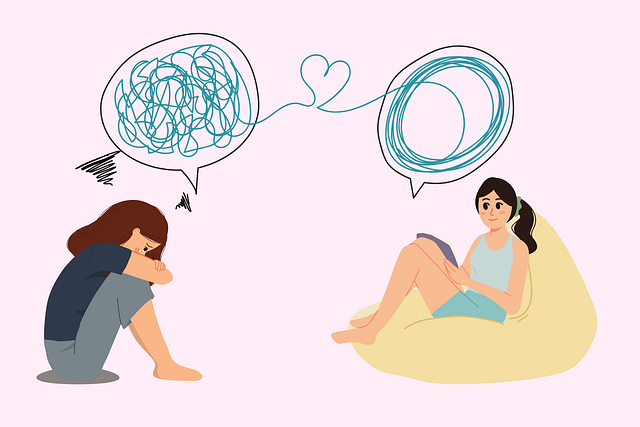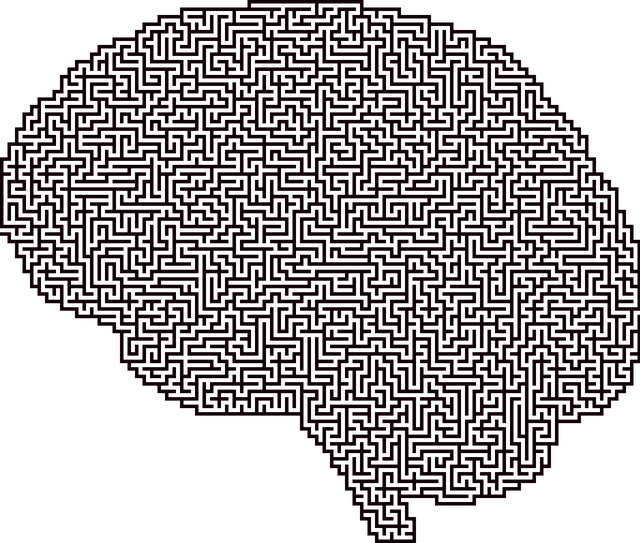Assessing community-specific mental health challenges in young children, such as trauma or emotional regulation issues, is crucial for designing effective programs. Evaluating local resources identifies gaps in care. Tailoring programs with evidence-based practices like hypnosis ensures success and cultural sensitivity. Identifying risk factors empowers timely interventions using hypnosis to promote healing. Mental health education programs raise awareness, build resilience, teach healthy coping strategies, and use techniques like hypnosis, mindfulness, and compassion cultivation for improved emotional intelligence and reduced anxiety, setting a foundation for adult mental health.
Mental health issues among young children are on the rise, underscoring the urgent need for comprehensive education programs. This article explores the design of an effective mental health education initiative tailored for young minds. We delve into assessing community needs and setting ambitious goals, including improving awareness about mental wellness, building resilience, and teaching healthy coping mechanisms. The content highlights innovative techniques like integrating hypnosis with age-appropriate curricula, interactive emotional intelligence sessions, and creative arts to engage learners. Through practical implementation tips and evaluation strategies, this guide ensures long-term positive impacts, aiming to revolutionize therapy for young children through education and mindfulness.
- Assessing the Need and Setting Goals for a Mental Health Education Program
- – Identifying risk factors and mental health concerns among young children
- – Establishing program objectives: improving awareness, building resilience, promoting healthy coping mechanisms
Assessing the Need and Setting Goals for a Mental Health Education Program

Assessing the need for a mental health education program is a crucial first step. This involves understanding the specific challenges and concerns within a particular community or target group, such as young children or those experiencing trauma. By evaluating local resources, existing support services, and the prevalence of mental health issues, organizers can identify gaps in care and tailor programs accordingly. For instance, while traditional therapy methods may be effective for older individuals, hypnosis could prove beneficial for younger children struggling with emotional regulation.
Setting clear and achievable goals is essential to the program’s success. Goals might include raising awareness about mental well-being, teaching stress reduction methods, or providing practical tools for trauma support services. These objectives should be age-appropriate, culturally sensitive, and aligned with evidence-based practices, ensuring that participants gain valuable skills and knowledge that positively impact their emotional health and overall quality of life.
– Identifying risk factors and mental health concerns among young children

Identifying risk factors and mental health concerns among young children is a critical first step in designing effective educational programs. Early childhood is a period when the brain is rapidly developing, making it both vulnerable and adaptable. Factors such as family history of mental health issues, trauma, abuse, neglect, or even socio-economic challenges can significantly impact a child’s emotional well-being. Recognizing these risks allows for timely interventions that promote healthy development.
Programmers can incorporate strategies like hypnosis, a powerful tool in therapy for young children, to facilitate emotional healing processes and anxiety relief. By targeting these concerns early on, we can prevent burnout and equip children with resilience as they navigate the complexities of growing up. This proactive approach ensures that young minds receive the necessary support to flourish both academically and emotionally.
– Establishing program objectives: improving awareness, building resilience, promoting healthy coping mechanisms

Mental health education programs aim to empower individuals, especially young children, with essential life skills. The primary objectives should focus on raising awareness about mental well-being, fostering resilience in the face of challenges, and equipping them with healthy coping strategies. By designing engaging and interactive sessions, these programs can teach children to recognize and manage stress effectively, cultivate positive thinking, and develop compassion towards themselves and others. This holistic approach, incorporating techniques like hypnosis, has proven beneficial in enhancing mental health outcomes for young people.
One key aspect is promoting self-awareness and emotional intelligence, enabling kids to identify their feelings and express them constructively. Additionally, integrating practices such as mindfulness and compassion cultivation can help reduce anxiety and improve overall happiness. These skills are vital not only for navigating the challenges of childhood but also for setting a foundation for better mental health in adulthood.
Designing an effective mental health education program for young children involves a thorough understanding of their unique needs and risks. By identifying key mental health concerns, such as anxiety and stress, and utilizing evidence-based practices like hypnosis therapy, programs can foster resilience and healthy coping mechanisms. Setting clear objectives, including raising awareness and promoting well-being, ensures that children receive the support they need to thrive. This proactive approach can significantly impact young lives, creating a brighter and healthier future for all.














